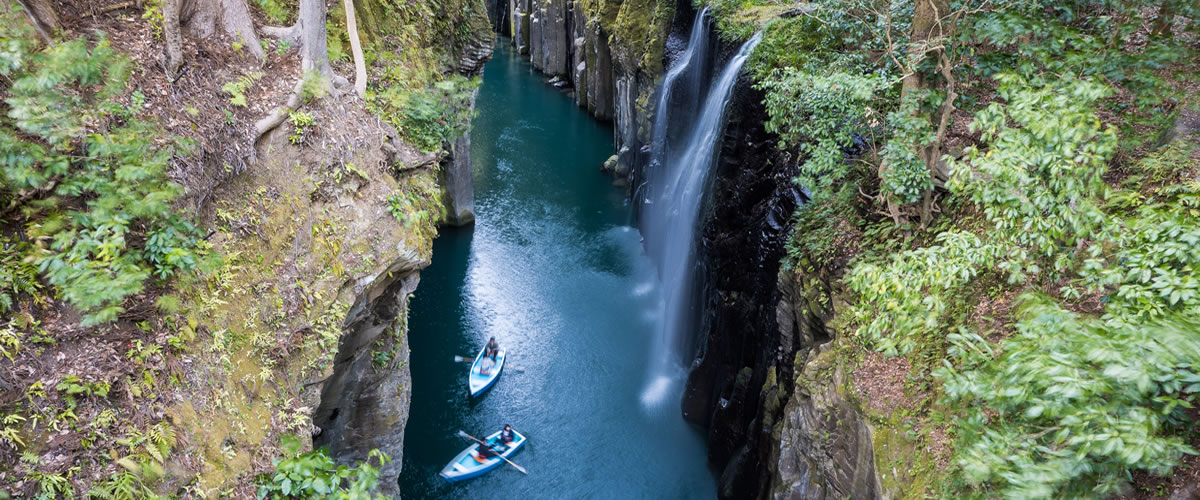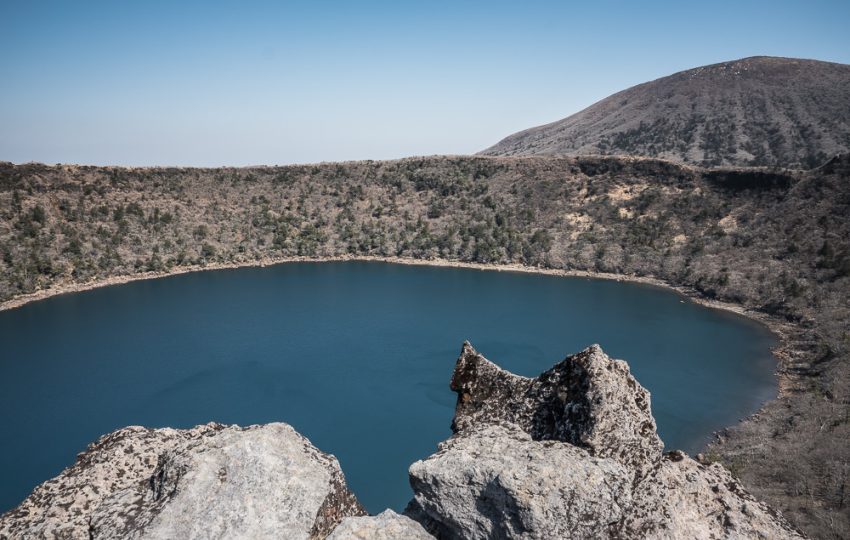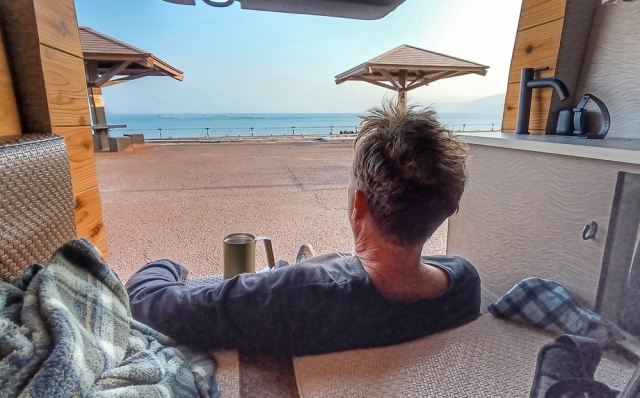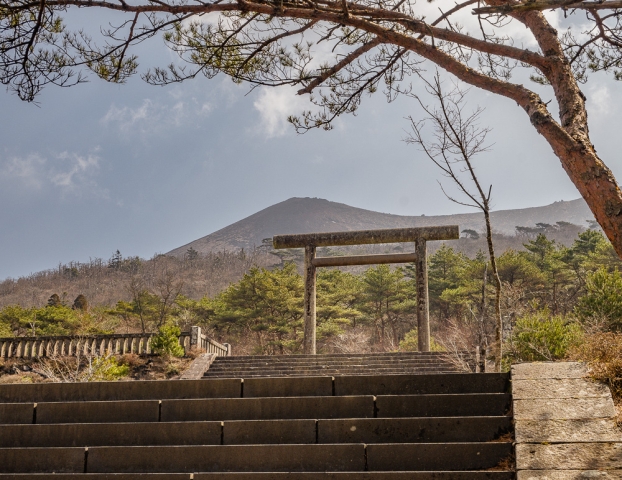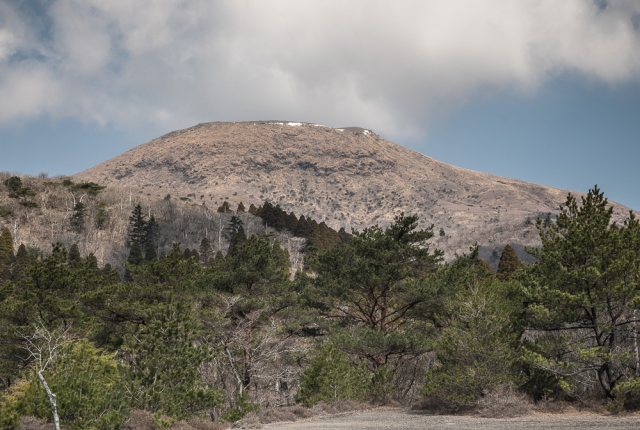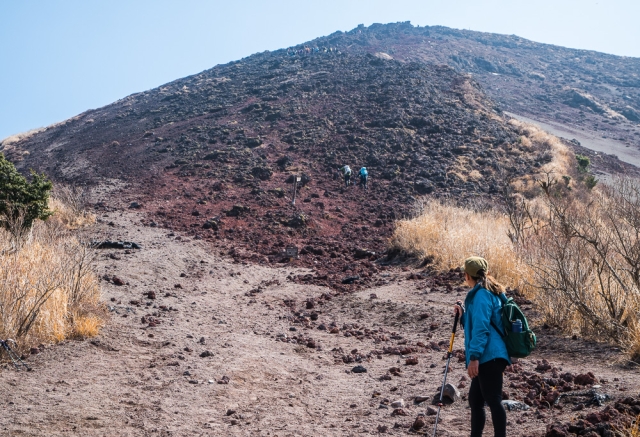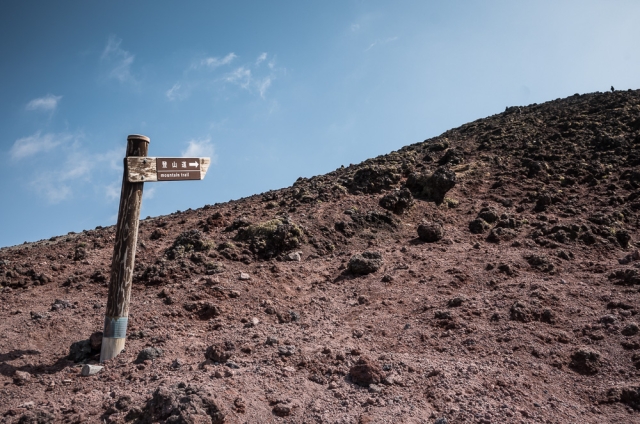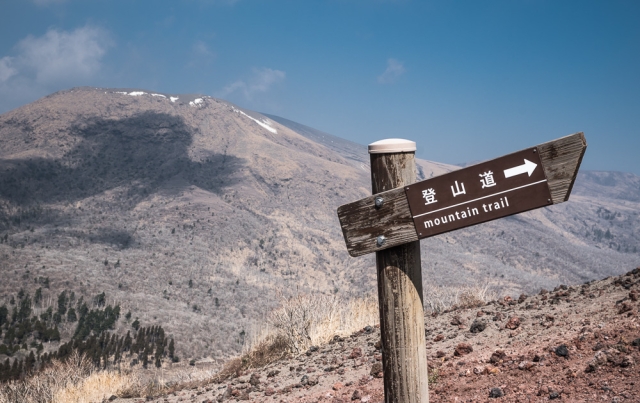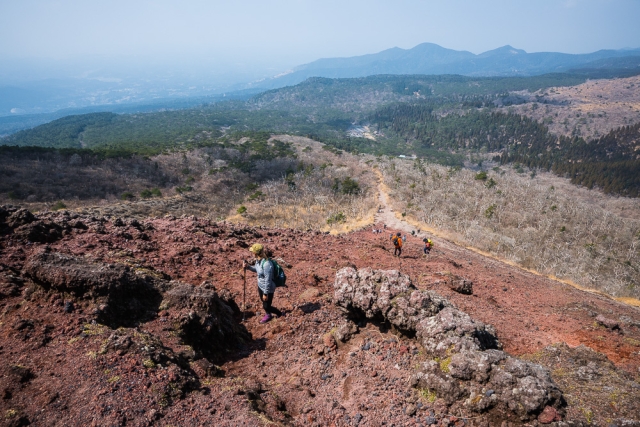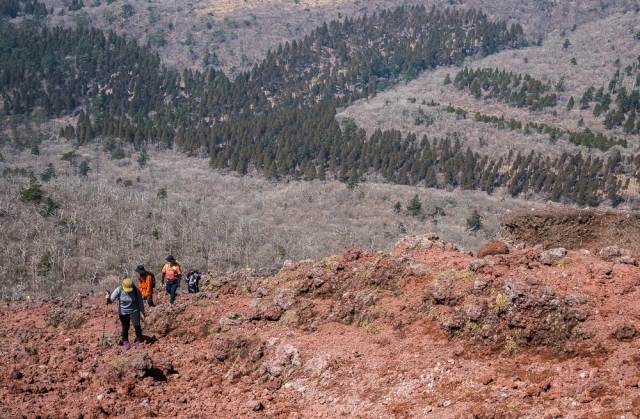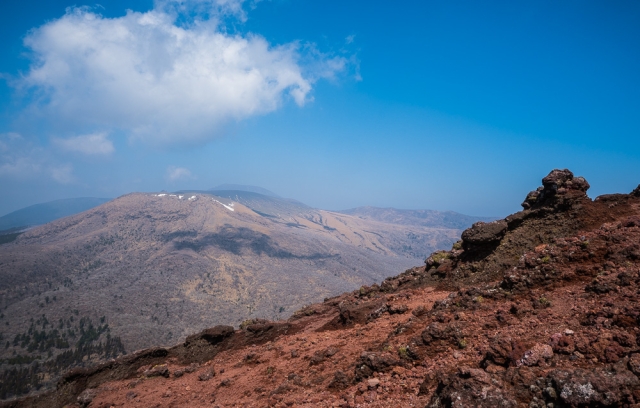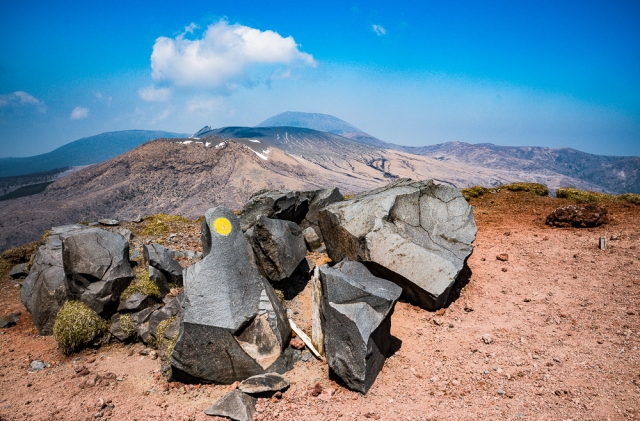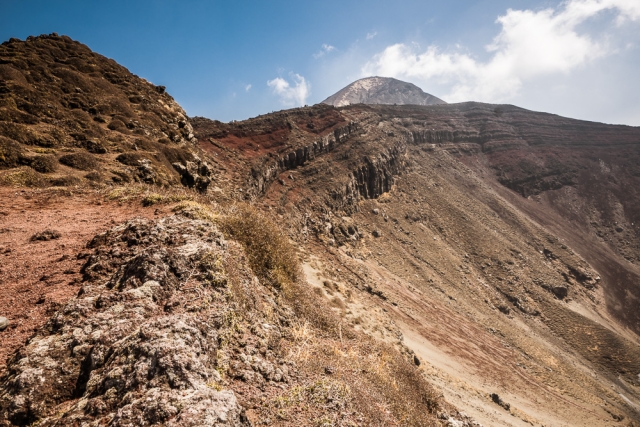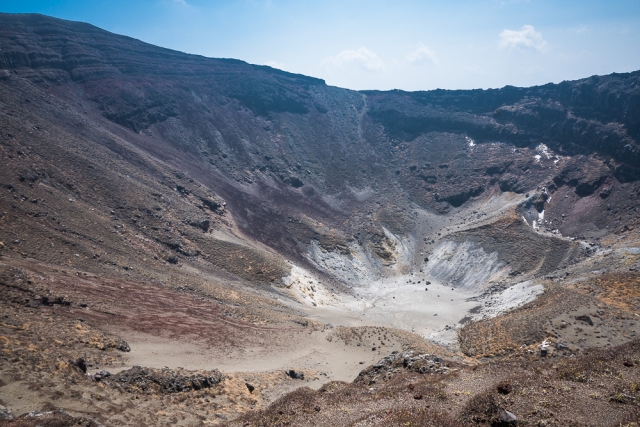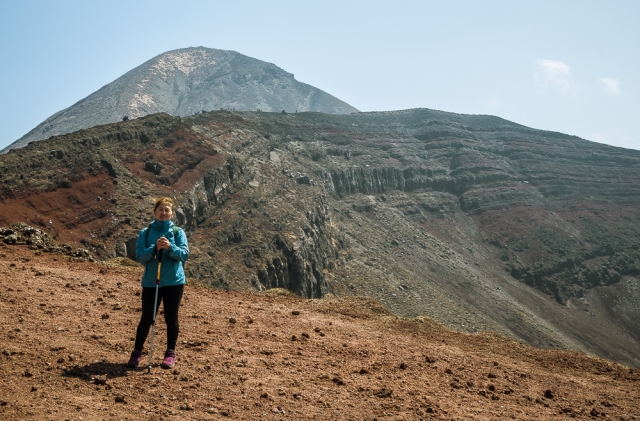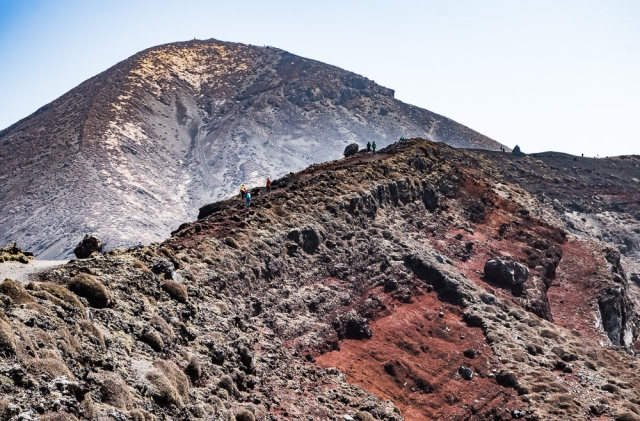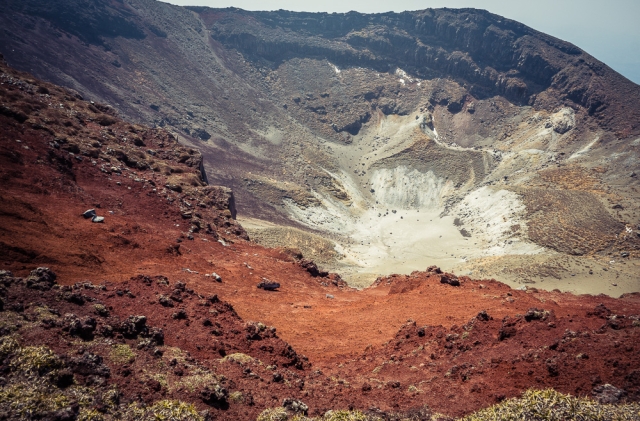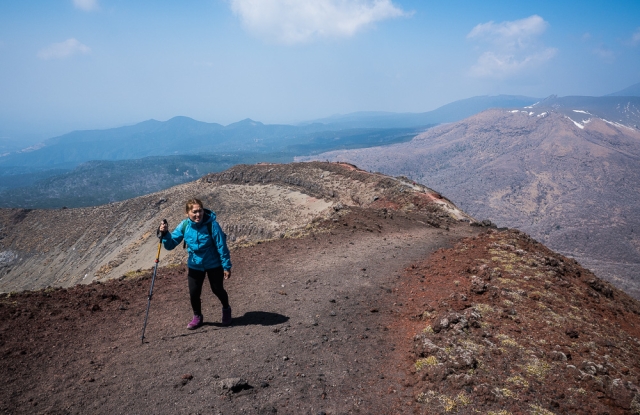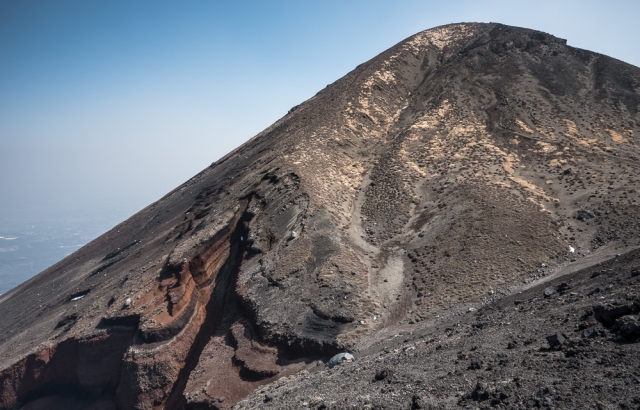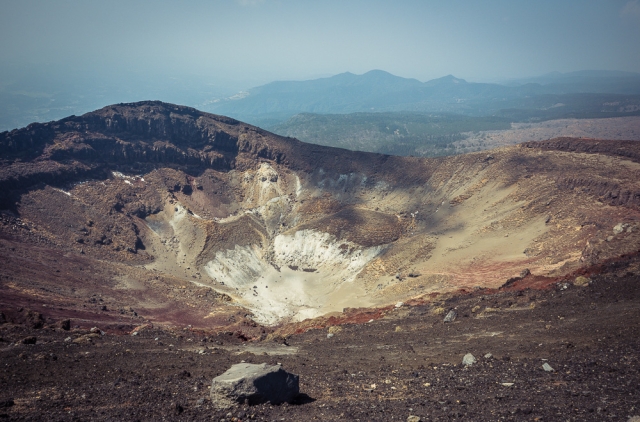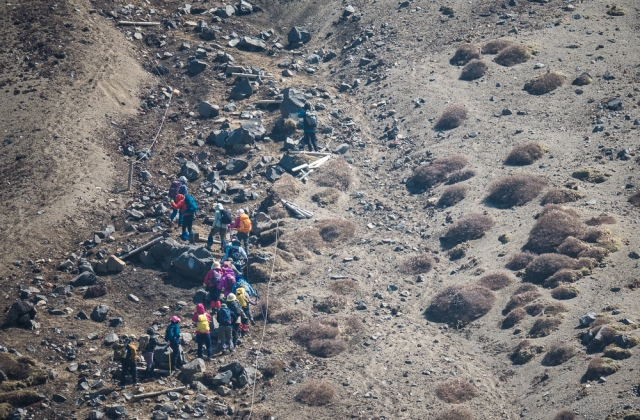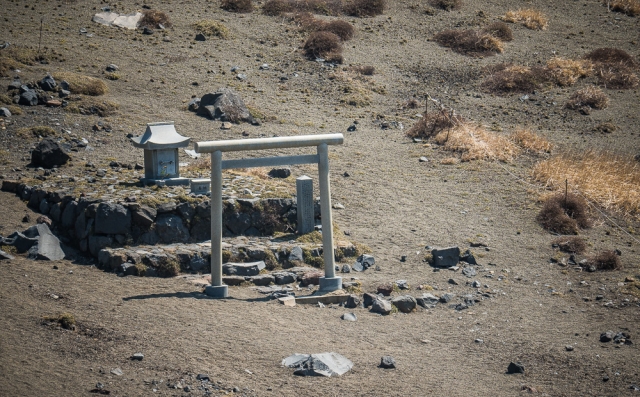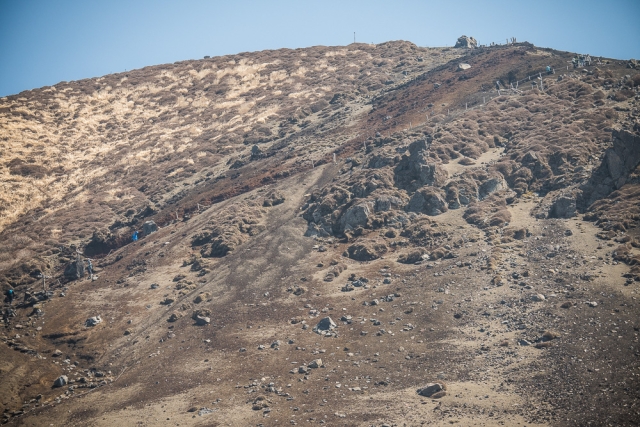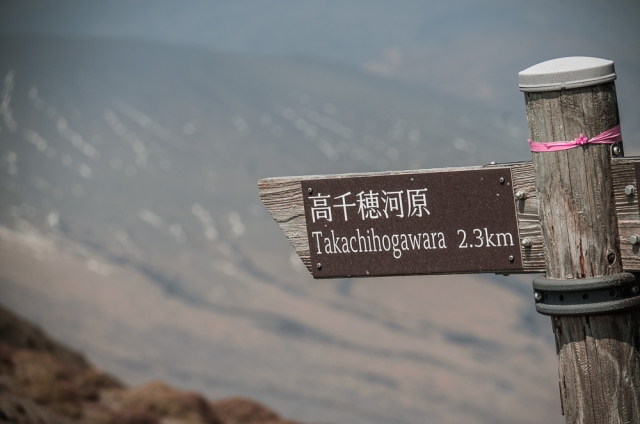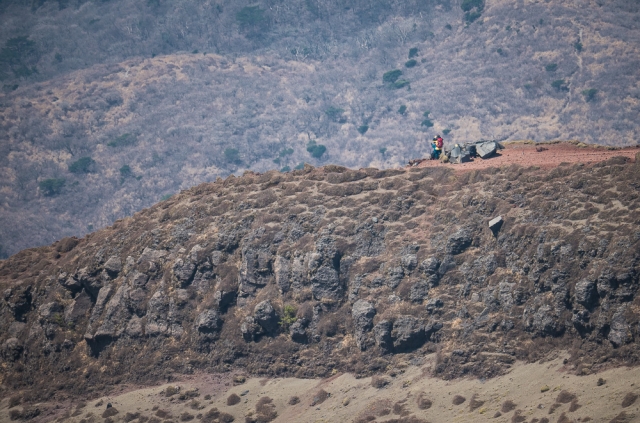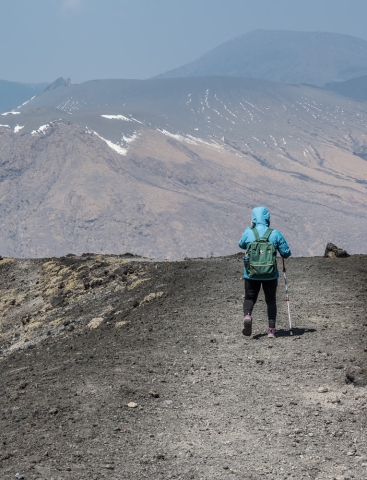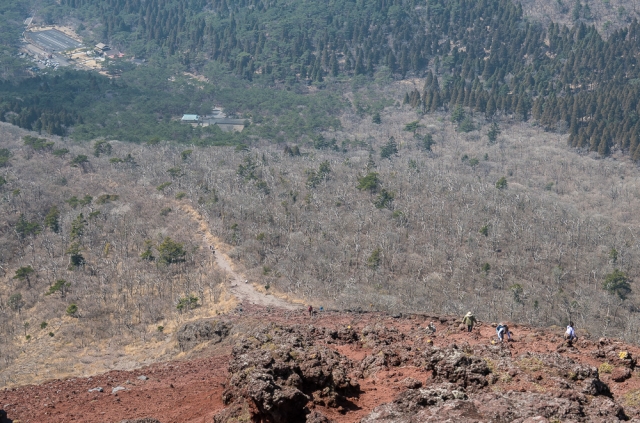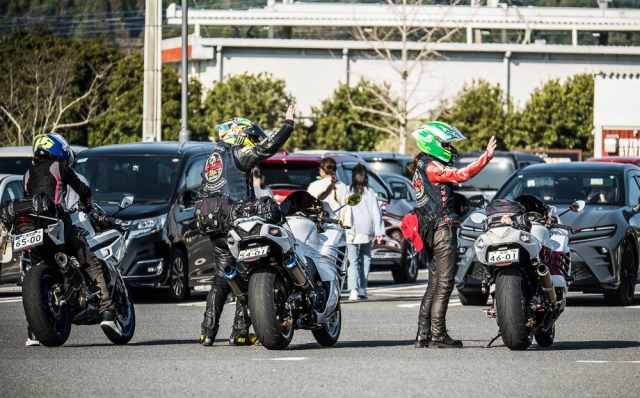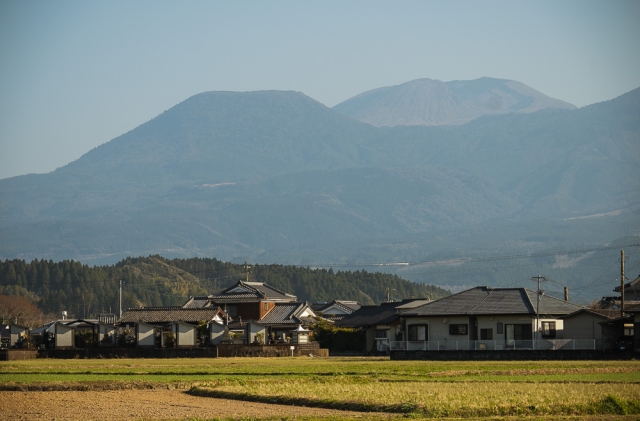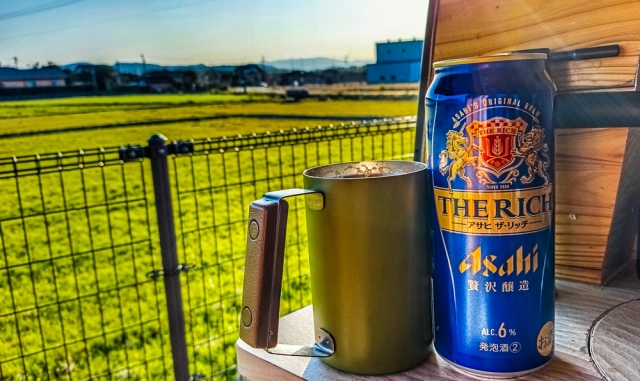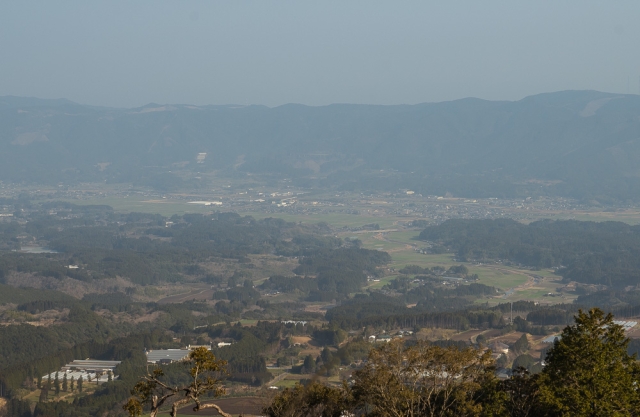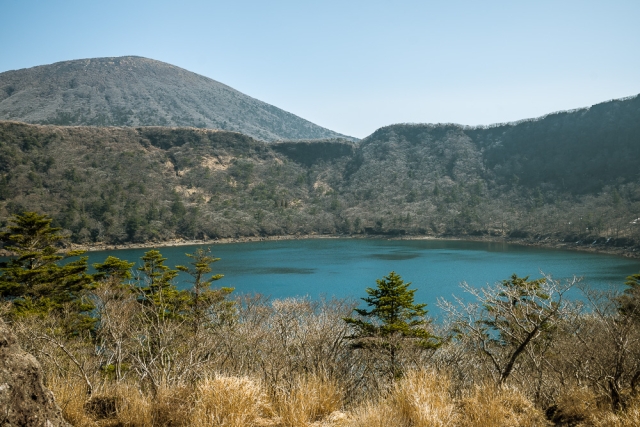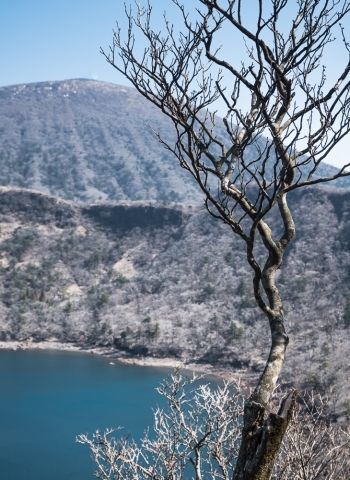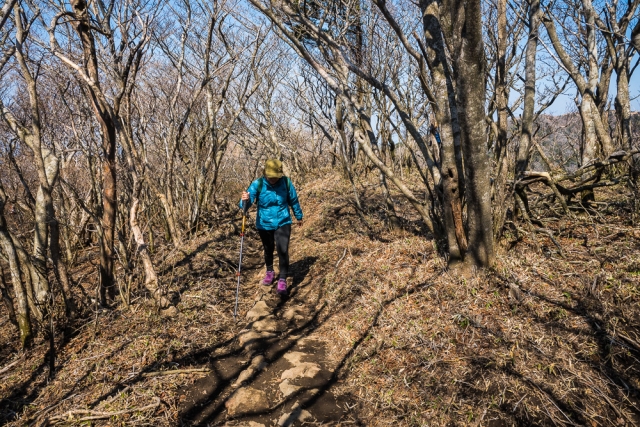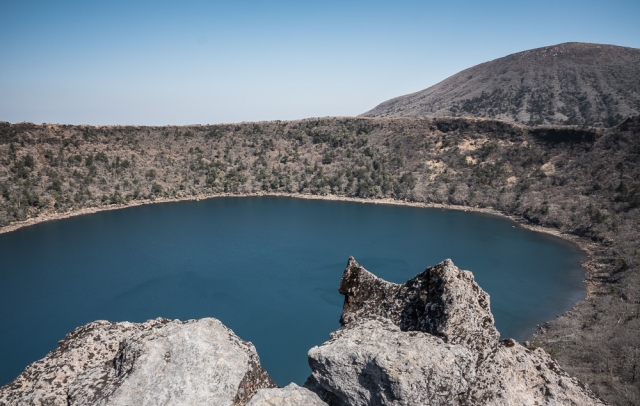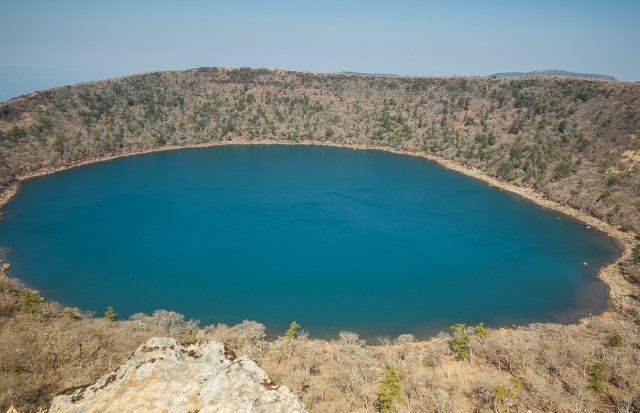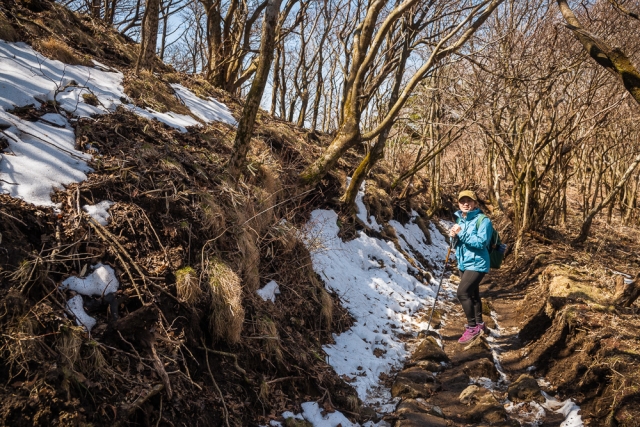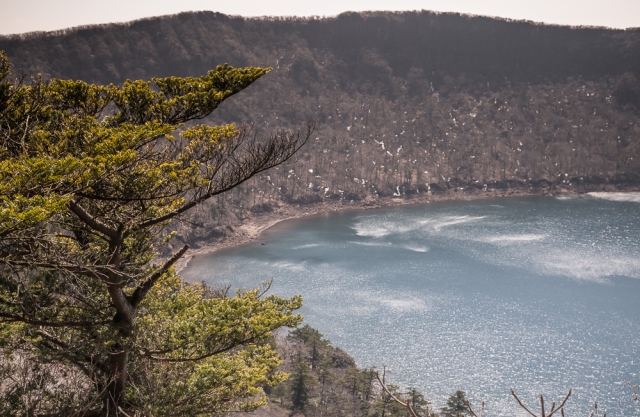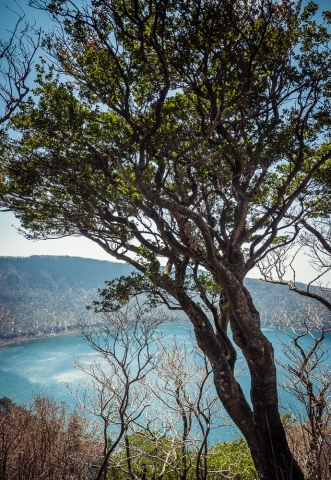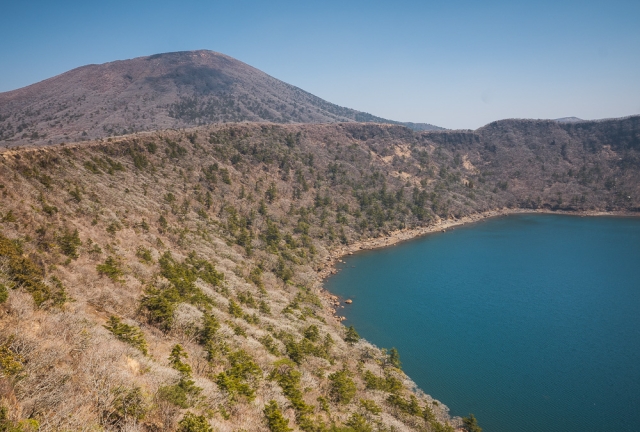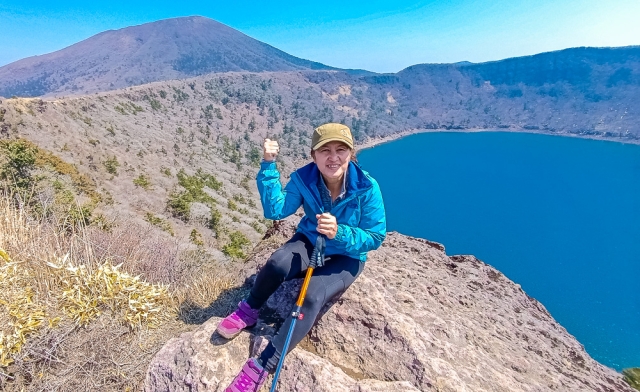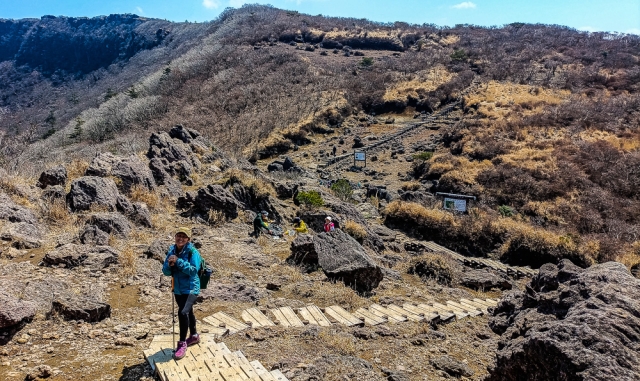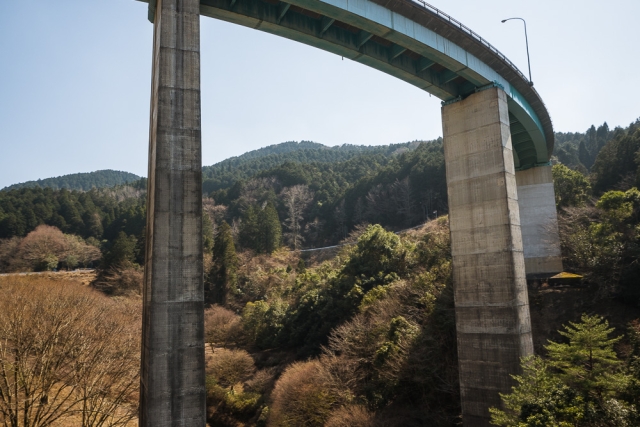Day 5: Sakurajima to Ebino
Leaving the still-smoldering volcano in the morning, we pointed the van north, driving through the coastal town of Kirishima and toward the Kirishima-Kinkowan National Park, where we would spend a couple of days hiking.
Before venturing into the national park – free to enter in Japan – we checked out the local road station (Kirishima) that we’d planned to use, which turned out to be a good idea as it was tiny and the toilet was a hole in the ground. Japanese road stations vary in facilities and amenities, with the city ones being fully loaded and the rural ones being somewhat feral, so we’d gotten into the habit of doing a toilet check for the suitability of an overnight stay beforehand.
We now had to change the plan and stay at the more northerly road station in Ebino tonight, which effectively gave us an extra day. You have to be flexible with plans and change them on the fly when living on the road.
It was time for a hike, and we headed to the trailhead for the Ohachi crater and Mount Takachiho, a 1,574-meter-high volcanic peak. This hike was not easy, as it was more of a climb over loose volcanic rubble, which is as sharp as hell and very precarious. However, the view of the crater was pretty spectacular when we made it to the rim. Not being equipped with the right hiking gear, we decided not to attempt the final kilometer or so to the summit, which looked steeper than what we’d just hiked up.
Getting back down was a little more challenging, especially with aging knees, so we took our time. Thoroughly exhausted with aching knees after the 5km hike, we headed to the Ebino Road Station through the park via the Ebino Plateau.
The Japanese are avid hikers and outdoor people, and most of those on the trails appeared to be our age or older. An outdoor lifestyle and a good diet seem to keep them fit and healthy well into their golden years.
Day 6: Ebino to Nishiki
It was decision time this morning: venture north to the next road station or drive back into the park for another hike. We decided to take advantage of the good weather and do the latter, so we drove to the Mt. Ohnami-ike trailhead. This hike was a little easier than yesterday’s volcanic scramble, and the reward was a view of a stunning azure blue crater lake, Japan’s highest crater lake at an elevation of 1,411 meters. We took the option of circling the crater, which turned out to be a lot further than it looked, around 6km in total, but the views were spectacular, and there was still snow and ice on some parts of the trail. In early spring, a lot of the foliage was still sparse and brown. In winter, it would all be snow-covered, in autumn yellows, oranges, and reds would prevail and in summer, lush verdant greens.
Again, we opted against climbing Mt. Karakuni, the tallest mountain in Kirishima-Kinkowan National Park, standing at 1,700 meters due to not having the right gear. The Japanese take their hiking seriously and have all the top-branded kit for it. [A level three eruption activity alert was issued for Mt. Shinmoedake, next to Mt. Ohnami-ike, the day we left Japan.]
Being a weekend, the park and its twisty roads were a mecca for local bikers, and we passed a lot of them on the way out to our next road station at Nishiki. The route also took us over two of Japan’s loop bridges, which are designed to get vehicles up and down the mountain quicker than carving tunnels through the rockface.
Tonight’s road station was a little busy, being a Sunday, but most of the day trippers had gone by nightfall. Staying at road stations is a bit of a lottery, and you have to move the van around at times to find a bit of privacy and avoid the large trucks that leave their engines idling for hours, the entrance and exits, other campervans, and the bright lights that are at these roadside stopovers (our van didn’t have curtains so we had to improvise).
Previous: Ume to Sakurajima
Next: Takachiho Gorge
